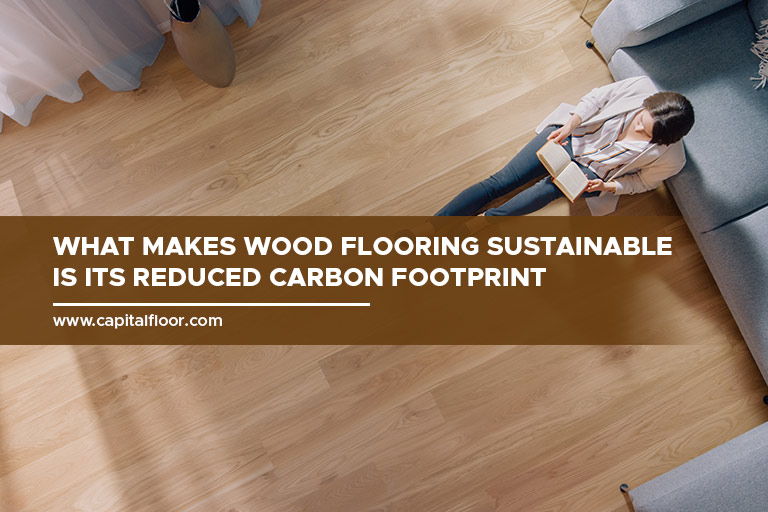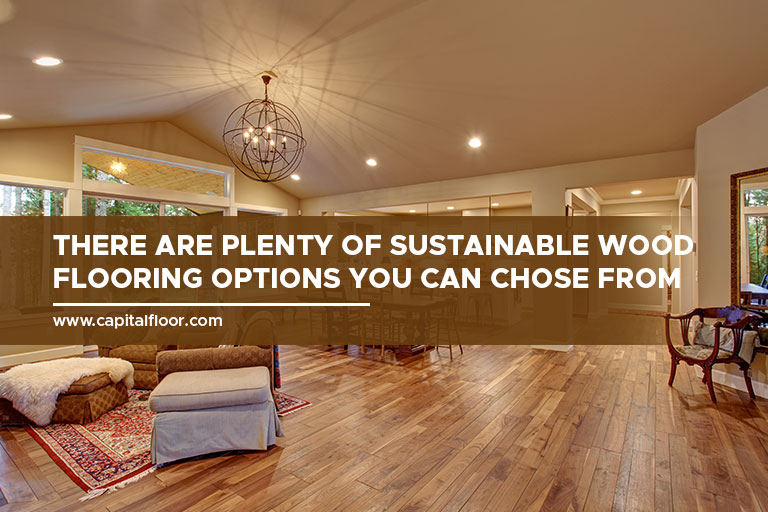Our showroom is open to the public. Please click HERE for more details.
Our showroom is open to the public. Please click HERE for more details.
With the rise of green building practices, many homeowners are becoming more environmentally conscious and are seeking to invest in more sustainable materials. Energy-efficient HVAC systems and LED lighting are among the various features that can help boost the sustainability and value of a home. Does wood flooring belong in this category? Let’s find out.

With proper care and maintenance, hardwood floors can last for decades. This makes them a more sustainable flooring option than carpets which will eventually wear out after a few years.
What makes wood an eco-friendly option is that it doesn’t require too much energy to produce. It doesn’t need to be mined, smelted, refined, or moulded.
Below are some of the other reasons that make wood flooring a more sustainable option:
Wood may be a renewable resource, but the government has set regulations to protect the period and amount of wood that can be harvested. While cutting down trees has a minimal impact on the environment, it requires proper management to ensure that the rate of harvest does not exceed the average growth rate.
Hardwood trees take up to 60 years to mature. While Canada’s current supply is enough to last the next century, sustainable harvesting methods allow for sufficient time for newly planted trees to grow and mature.
The process of manufacturing floor coverings often results in plenty of waste. Also, the use of leftover raw materials and chemicals during the processing can have an adverse impact on the environment and the bottom line of the project.
Natural resources, such as wood and stone, do not require too much energy to produce. Other flooring options, like carpet, tile, and linoleum, use plenty of energy and chemicals during the manufacturing process of these products.
Also, the production of wood flooring generates little waste since manufacturers recycle wood chips and sawdust to make paper and other composite products. Others burn the excess wood, which is considered clean bio-energy. There are several waste management options allowing manufacturers to utilize about 99% of each harvested tree.
Proper care and maintenance help ensure that your wood floor lasts for a century. Also, you should refinish and restain the surface to maintain its aesthetic appeal. In comparison, laminate and linoleum only last about 15 to 25 years, while the carpet’s estimated life span is 8 to 10 years.
While stone and tile floorings can also last more than 100 years, they are susceptible to stains and cracks, which cannot be refinished. Meanwhile, the extreme durability and resistance to wear and tear make hardwood floors a better alternative. While wood flooring is more costly than carpet and linoleum, it offers long-term benefits, which help you save time and money in the long run.
Over the years, sustainable and environmentally-friendly solutions have become increasingly popular as they help keep the environmental footprint to a minimum, especially during large-scale projects. Wood is a carbon-neutral product since trees breathe in carbon dioxide and give off oxygen. Its carbon-neutral status is maintained even after the tree is harvested.
In addition to that, wood flooring helps boost the overall air quality in your home. Unlike carpets, hardwood floors are hypoallergenic and do not easily get contaminated with mould, dust, and animal dander. Other flooring options, such as tiles and laminates use harsh adhesives that produce harmful emissions, affecting the air quality in your home.
What makes hardwood floors a more sustainable option is that homeowners can use them more than once for flooring and other building projects. You can sand and restain the surface to match various design plans.
While severely damaged wood cannot be used again as flooring, you can still recycle the wood for other projects, including accent walls, furniture, or other decorative features.

Different varieties of wood flooring have different strengths and weaknesses..Your choice should depend on whether your house is an apartment in a highrise building or a multi-storeyed house on the ground level.
We have rounded up some of the best types of wooden flooring for your home.
| Wood Type | Advantages |
| Douglas Fir |
|
| Oak Wood |
|
| Brazilian Cherry Wood |
|
| Maple Wood |
|
| Black Walnut Wood |
|
Wood flooring is sustainable as long as it is sustainably harvested from a managed forest. While the wood types mentioned above are the most popular choices, there are other eco-friendly wood floor varieties.
In addition, you need to choose the most sustainable wood flooring options, such as engineered wood flooring, if you want to minimize your carbon footprint.
When it comes to installing hardwood flooring and providing high-quality, sustainable wood flooring options, trust Capital Hardwood Flooring. Call us at (416) 536-2200 to request a quote for our hardwood flooring in Toronto or submit our contact form to send us a message.